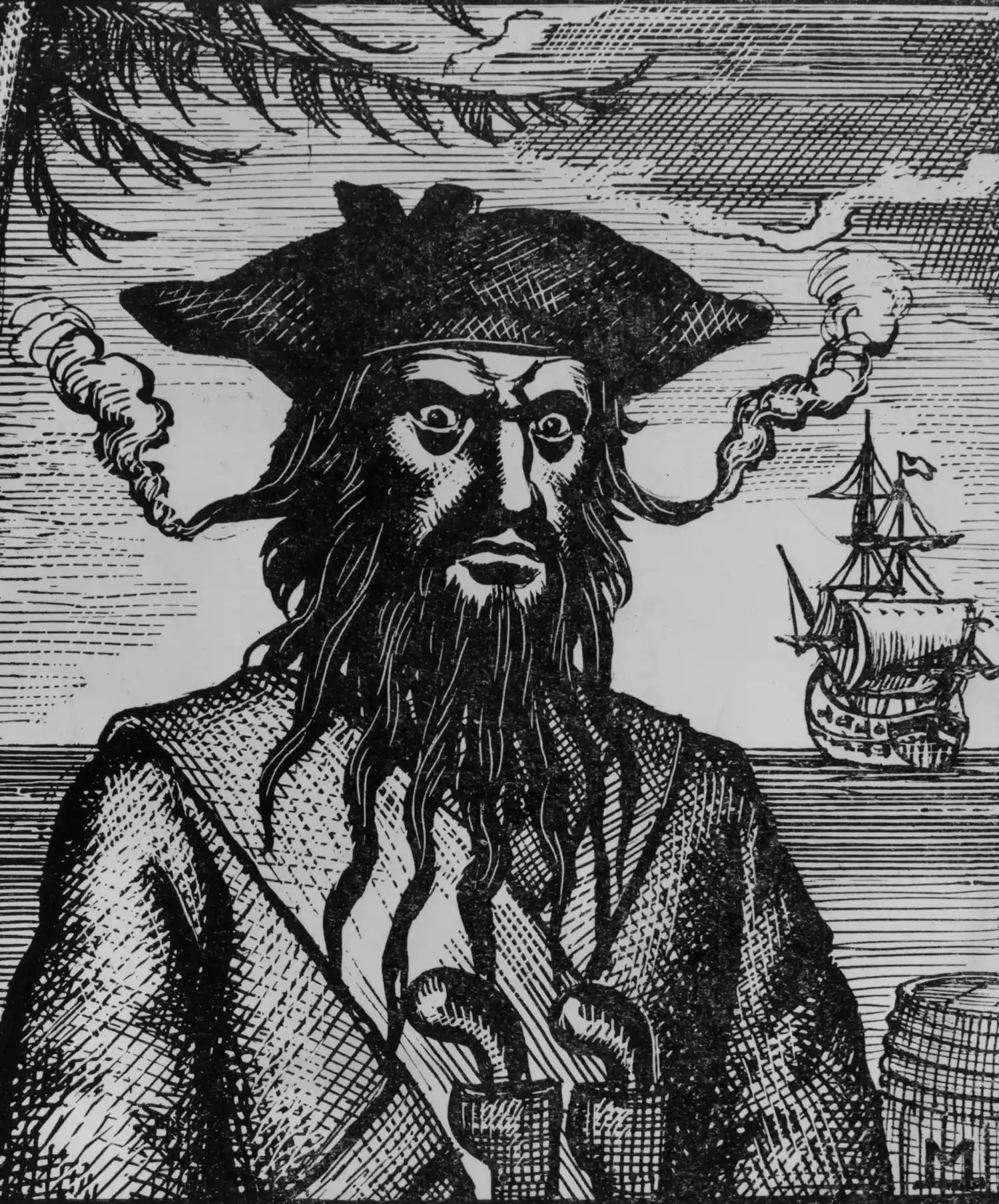
When you think of pirates, one name undeniably stands out: Blackbeard. Born Edward Teach (or sometimes Thatch), this notorious pirate’s nom de guerre evokes images of a dark, fearsome figure with smoldering fuses woven into his beard.
Blackbeard is the incarnation of the Golden Age of Piracy, a time between the 17th and the early 18th century when robbery on the high seas and at colonial ports reached an all-time high. According to a British account from during the terror of this age, the pirate “frightened America more than any comet that has appeared there [for] a long time.”
During his brief but productive career, Blackbeard and his men plundered many merchant and slave ships and even assembled a mini pirate armada that blockaded the town of Charleston, North Carolina for nearly a week. Curiously, after looting several ships in the Charleston docks, Blackbeard made only one ransom demand: a chest of medicine in exchange for hostages. Some of these medical supplies may have survived, offering a rare glimpse into pirate healthcare.
Blackbeard’s flagship, the Queen Anne’s Revenge, ran aground in May of 1718 at Beaufort Inlet, North Carolina, shortly after the Charleston harbor blockade. The pirate chief disbanded the flotilla, and escaped with only a handful of men, transferring his most valuable loot to a smaller ship called Adventure, on which he made his getaway. Blackbeard was killed in battle just a year later, almost to the day.

The wreck of Queen Anne’s Revenge was miraculously rediscovered in 1996 off the coast of North Carolina, and archaeologists have been studying it ever since. They’ve excavated about 60% of the site and retrieved numerous artifacts, among them a treasure trove of medical equipment that ship doctors used on Blackbeard’s injured and diseased crew.
Shiver me timbers
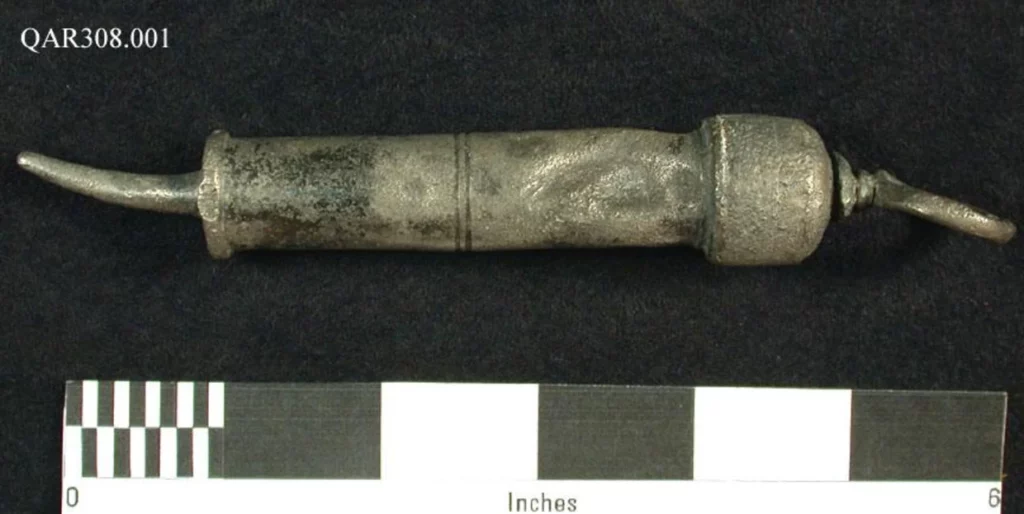
Many of these instruments were brutal by today’s medical standards. These include a metal urethral syringe used to inject mercury to treat naughty pirates of syphilis. The use of mercury often causes severe side effects such as tooth loss, kidney damage, and even death. Despite these risks, mercury remained a popular treatment for syphilis until the discovery of penicillin in the 20th century.
“Because his passion for piracy, I think he cared very much about keeping it going, and to keep it going, he had to have a healthy, functioning crew,” Linda Carnes-McNaughton, an archeologist working on the project told The Washington Post.
Indeed, the ship probably had many more medical devices and instruments than your typical run-off-the-mill pirate ship. Queen Anne’s Revenge was originally a French slave ship called La Concorde de Nantes. After Blackbeard captured the vessel with the blood and sweat of his men, he decided to adopt the three French surgeons who were aboard. The doctors’ lives were spared and they were paid for their services, which they continued to perform even after Blackbeard jumped ship shortly after Charleston.
The doctors must have employed all sorts of gadgets, including a “clyster pump,” an enema device used to treat severe dehydration by pumping fluid into the rectum. Other interesting devices found among the Queen Anne’s Revenge wreck include a bloodletting instrument called a porringer, cast brass mortar and pestle for grinding medications, and galley pots likely used to store balms, salves, and other healing potions. A silver needle and the remains of scissors would have likely been handy during surgeries.
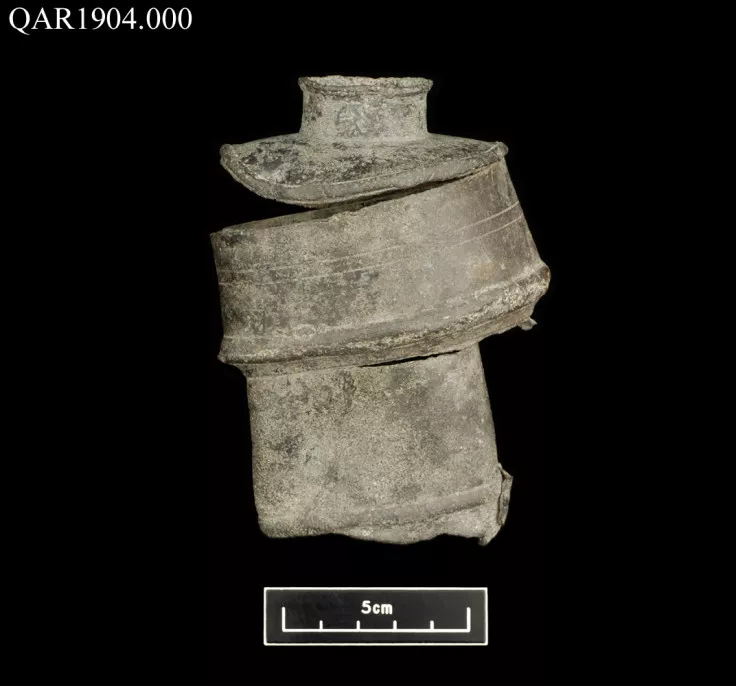
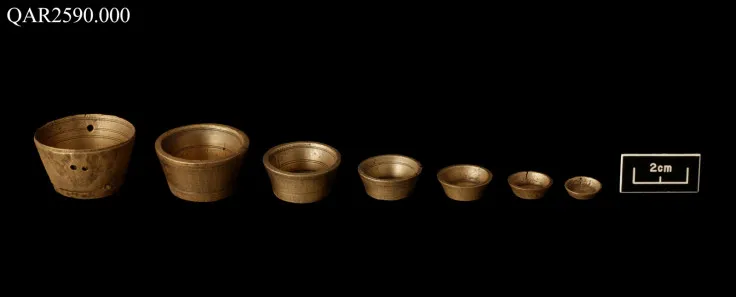
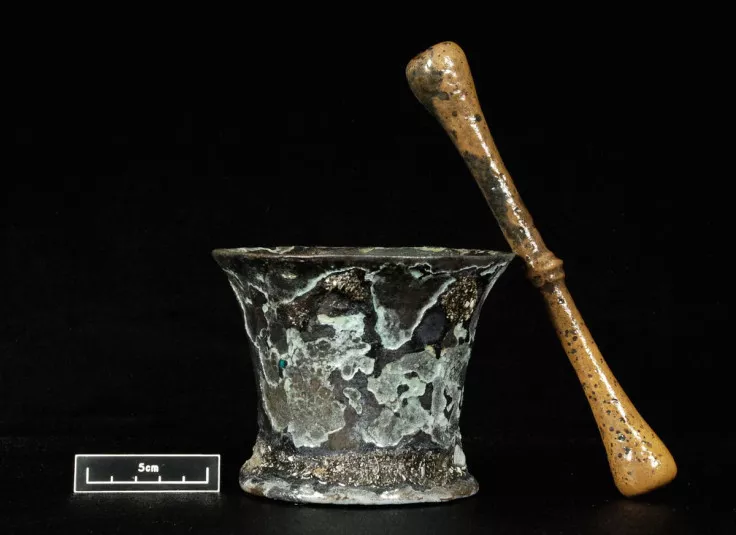

All of the instruments were made in France and were taken along with the rest of the ship.
The doctors and their medical gadgets probably helped save many lives, but that doesn’t mean a pirate’s life was easy — quite the contrary. The crew suffered many injuries, wounds, amputations, and burns as a result of their violent plunders. But their worst ordeals were due to diseases typical of life on the high seas.
Arguably the most infamous of pirate-related maladies, scurvy resulted from a deficiency of vitamin C. Pirates often spent months at sea with limited fresh produce, leading to symptoms like swollen gums, joint pain, and anemia. Once understood, the simple remedy of consuming citrus fruits like lemons and limes made a world of difference.
Beyond just scurvy, a pirate’s diet — often limited to salted meat, hardtack, and grog — wasn’t exactly a nutritional goldmine. Over time, deficiencies of other essential vitamins and minerals could manifest in various health problems.
Then there was dysentery, an inflammatory disease of the intestines often caused by contaminated drinking water and poor, unsanitary conditions. Pirates frequently sailed tropical and subtropical regions where mosquito-borne diseases like malaria and yellow fever were rampant. Visits to ports and indulgence in local pleasures meant that sexually transmitted diseases, particularly syphilis, were not uncommon among pirate crews.
As for Blackbeard, his tale met an abrupt end at the hands of Lieutenant Robert Maynard of the Royal Navy on the sandy shores of Ocracoke Island on November 22, 1718. His head was stuck on a piling off Hampton, Virginia, serving as a warning to other lawbreakers.
But even in death, Blackbeard’s legend persisted; tales were whispered of his decapitated body swimming circles around his enemies.


